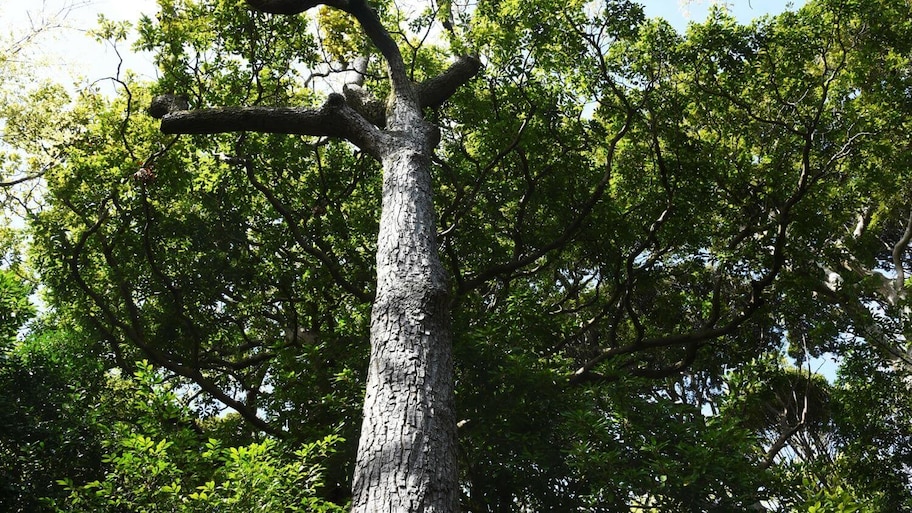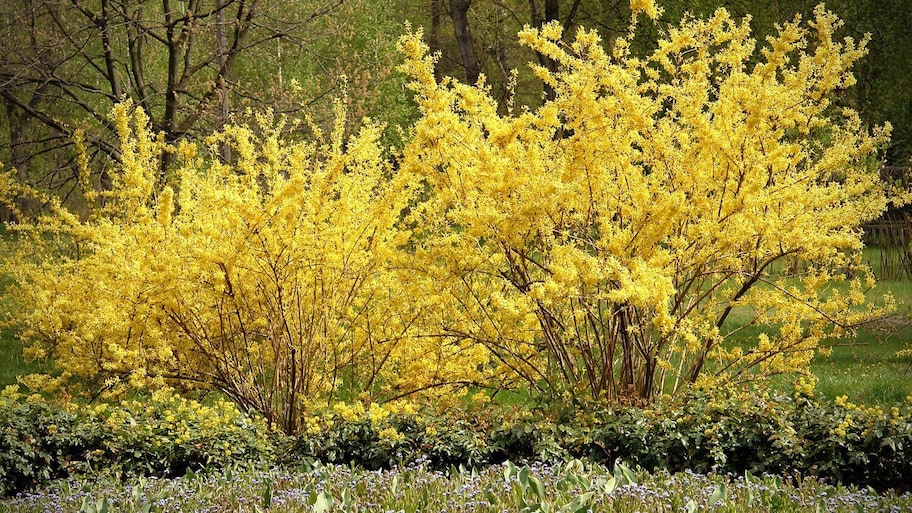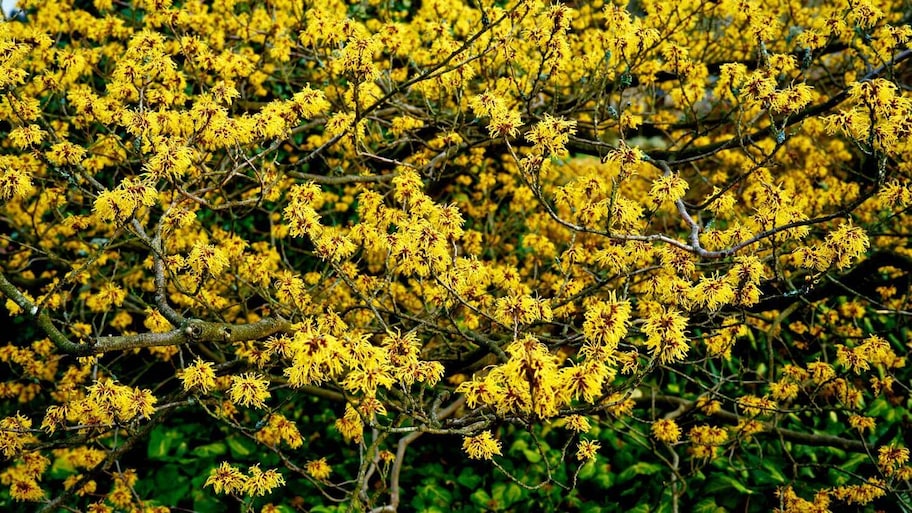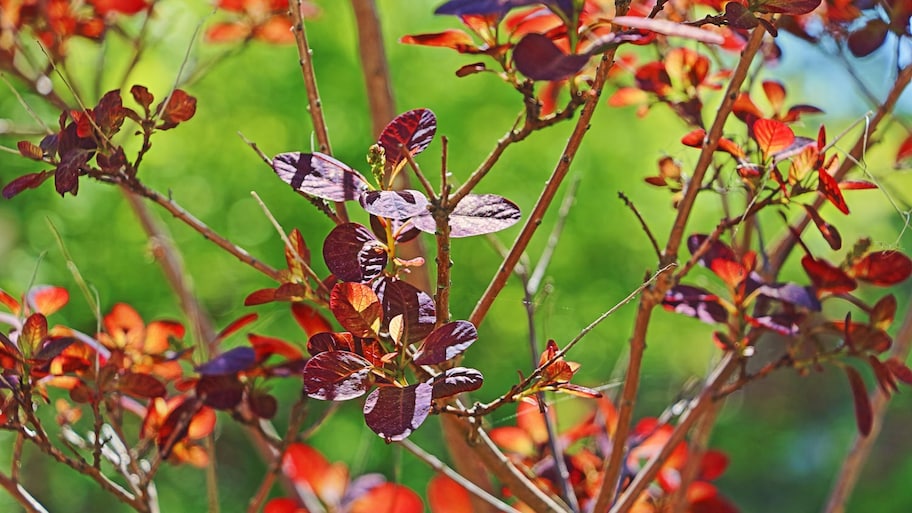32 Drought-Tolerant Trees and Shrubs to Have in Your Yard
These plants blow others out of the water when it comes to hardiness


Highlights
Trees that have elaborate root systems and waxy leaves are more resilient in drought-prone conditions.
Shrubs with smaller leaves are ideal for arid conditions.
Research your location’s USDA plant hardiness zone for best results.
Whether you live in an arid climate or trying to conserve water, you’re ready to plant trees and shrubs that require little irrigation. Read on for a list of go-to varieties, noting their USDA Plant Hardiness Zones. For the best results, ask your local landscaper to water them initially as they establish their root systems.
Trees
When trees wield extensive root systems and leaves with protective wax coatings, they tend to be more resilient in arid conditions. Consider planting the following tree types in your yard.
1. Ginkgo Biloba
Featuring fan-shaped leaves and vibrant yellow foliage in the fall, these ancient trees (also called “maidenhair”) are ideal in zones four through nine.
2. American Elm
When mature, these trees are tall and stately. Plant American elms in zones two through nine. Consider planting the Princeton variety, which is more disease resistant.
3. Eastern Arborvitae
These very common evergreen trees or shrubs can grow up to 50 feet high and are ideal for privacy hedges. Plant this type of tree in zones two through seven.
4. Washington Hawthorn

These trees’ flowering blooms become berries, which attract birds in the winter. Plant in zones five through nine.
5. Sassafras
These hardy trees grow 30 to 60 feet tall, with broad-lobed leaves and autumnal color. Plant in zones four through nine.
6. Shagbark Hickory
Along with fall colors, these trees feature peeling bark resembling birch trees. Plant in zones four through eight.
7. Chinese Pistache
These trees are tolerant of poor soil and are ideal for xeriscaping. This type of tree grows 30 to 50 feet tall, and they feature orange or red foliage in the fall. Plant in zones six through nine.
8. American Redbud
These medium-sized trees produce pinkish-purple blooms and grow 20 to 30 feet tall. Plant in full sun in zones four through nine.
9. Sawtooth Oak

These acorn-producing trees feature full canopies and prefer full sun. Plant in zones five through nine.
10. Crape Myrtle
These flowering trees are elegant and beautiful, and they typically grow in the South. Plant in zones six through ten.
11. Dwarf Alberta Spruce
These evergreen trees are ideal for formal gardens, and they thrive in zones two through eight.
12. Green Ash
These fast-growing shade trees sport large green leaves and can grow as tall as 70 feet tall. Plant in zones three through nine.
Shrubs
In general, shrubs with smaller leaves, such as needled evergreens, are less vulnerable to drought conditions than plants with larger leaves.
13. Lilac
These flowering shrubs and members of the olive family flourish in zones three through seven.
14. Forsythia

Plant these shrubs, which sport vibrant yellow blossoms beginning in early spring, in zones five through nine.
15. Juniper
These fragrant evergreen features flowers that turn into berries, and thrives in zones four through nine.
16. Holly
These evergreen shrubs and trees feature shiny green foliage, and are ideal for zones five-b through nine.
17. Japanese Flowering Quince
These woody perennial shrubs are members of the rose family. Plant them in zones four through nine for best results,
18. Beauty Bush
With pink-purple, bell-shaped flowers, these members of the honeysuckle family tend to spread. Plant in zones five through nine and prune after flowering.
19. Boxwood
With branches and evergreen leaves close together, these slow-growing plants look solid. Plant in zones four through ten and prune on a regular basis after spring frosts to maintain their shape.
20. Butterfly Bush
The red, pink, white, or purple flowers on these bushes attract butterflies, bees, and hummingbirds. Plant in zones five through nine, making sure this plant variety is not invasive in your area.
21. Witch Hazel

Featuring yellow blooms in the fall and winter, these shrubs or trees grow 10 to 25 feet tall and spread between 10 to 20 feet. Plant in zones three through nine.
22. Cliffrose
These hardy plants in the rose family are often found on the sides of cliffs, and they prefer zones four through nine.
23. Curl Leaf Mountain Mahogany
With feathery plumes and leaves that curl, these broadleaf evergreens take well in zones five through nine.
24. Fragrant Sumac
With purple, orange, or red foliage in the fall, these bushes (technically trees) prefer zones four through eight.
25. Japanese Barberry
With leaves ranging from yellow, orange, red, purple, and green, these shrubs prefer zones four through nine. Be aware that most feature thorns and the plants can be invasive.
26. Leatherleaf Viburnum

With long thick leaves and small yellow-white flowers that turn into red berries, these bushes prefer zones five through eight.
27. Littleleaf Mockorange
These blooming shrubs are members of the hydrangea family. They are best suited for zones six through eleven.
28. Mountain Spray
With flowers that change from white to gold or brown and peeling red-brown bark, these bushes should be planted in zones three through seven.
29. Ninebark
Tolerating acidic or alkaline soil, these shrubs work well in cold temperatures in zones two through eight.
30. Purple Smoke Bush

Featuring pink-purple flowers and purple or green leaves, these bushes turn orange, purple, and red in the fall. In the sumac family, they’re ideal in zones four through nine.
31. Shrubby Cinquefoil
With yellow, peach, orange, pink, or white flowers, these bushes in the rose family thrive in zones two through seven.
32. Silver Buffaloberry
Plant these thorny bushes with silver leaves in full sun. Ideally suited for zones three through nine, they can handle cold temperatures.
